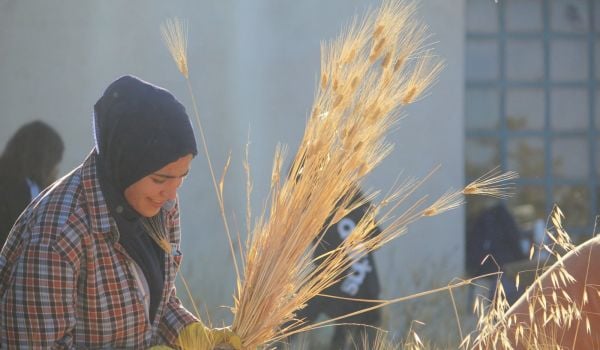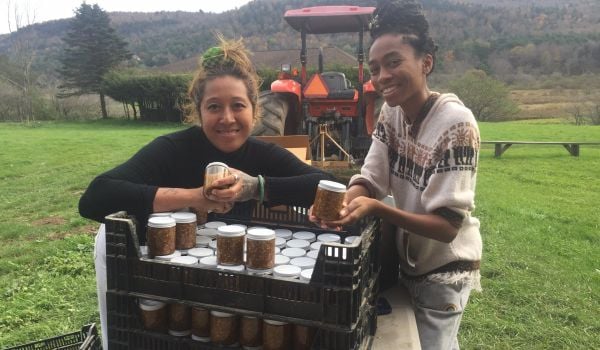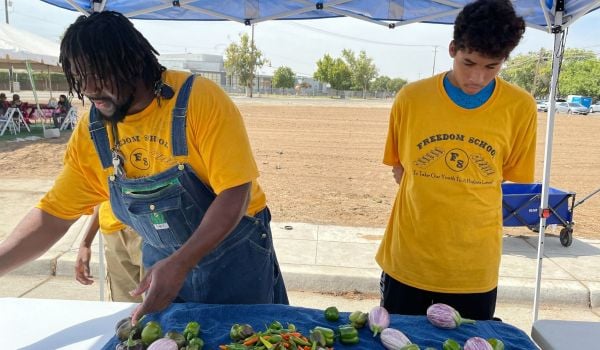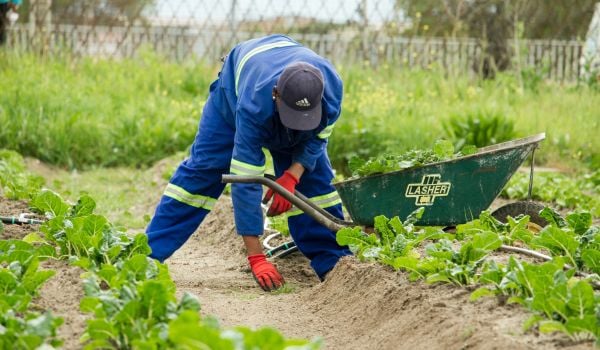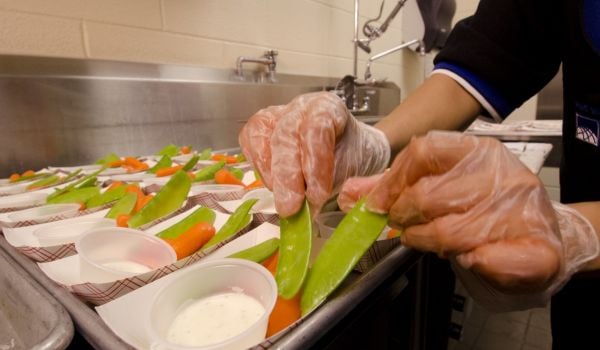The 61-year-old African American woman arrived at the health clinic with high blood pressure, prediabetes, and worries about kidney failure—a concern for prediabetics with insulin resistance.
She told Dr. Steven Chen that she wanted to learn to take care of her body, lose weight, and eat right. He signed her up for a produce prescription that gave her free fresh, local fruits and vegetables, along with a suite of parallel interventions, like exercise. In just four months, says Chen, the woman was no longer prediabetic, and she saw a significant drop in her insulin levels, along with a huge improvement to her kidneys.
“We had a window to get her off that track and towards health,” he adds. The intervention “helped her build success and agency” that will potentially have long-lasting, positive effects on her life.
To those with limited resources, “healthy foods [are perceived] as luxury items. That has downstream implications for obesity, diabetes, and other chronic diseases.”
It seems like a straightforward proposition that Americans should eat more fruits and vegetables. Millions of us experience diet-related diseases such as obesity (78 million), hypertension (67 million), and diabetes (29 million), and 85 percent of U.S. healthcare spending now goes to these types of “chronic, progressive, and preventable health conditions.” But making this connection is easier said than done, especially since limited access to produce is often tied to food insecurity, which means low-income folks take the hardest hit.
This in spite of many worthy interventions over the years: The National Farm to School Network helped to expand the amount of local produce making its way into the National School Lunch Program, which provides free or reduced-price meals to almost 30 million low-income students a day; Double Up Food Bucks gives extra benefits to purchase produce to some recipients of the U.S. Department of Agriculture’s (USDA) Supplemental Nutrition Assistance Program (SNAP) benefits, formerly known as food stamps; and the Special Supplemental Nutrition Program for Women, Infants and Children (WIC) provides vouchers to low-income moms and young kids for healthy foods including produce.
Why aren’t these programs making enough health headway? To those with limited resources, “healthy foods [are perceived] as luxury items. That has downstream implications for obesity, diabetes, and other chronic diseases,” says Hilary Seligman, a professor of medicine at the University of California, San Francisco (UCSF). And she, like many others, believe it’s time for the healthcare sector to step up.
One response to this call has been produce prescription programs (PPRs in USDA parlance). They’re part of a broader “food as health” effort—including medically tailored meals and free distribution of local produce—meant to address the double-whammy of poor health and food insecurity across the country. PPRs in particular “envision an ecosystem in which healthy food becomes a part of healthcare because it’s such an important part of your health,” Seligman says. And they’re being met with optimism “because [they] maintain a lot of the dignity of shopping for yourself and choosing your own foods.”
PPR Program Basics
In simplest terms, PPRs—which may alternatively be referred to as PPPs or Produce Rx, and which Civil Eats has reported on since they first began to emerge—allow clinicians to prescribe fresh produce to low-income patients with diet-related health risks or conditions.
A person with diabetes might walk into a community health center, meet with a doctor or nurse practitioner who ask a series of targeted questions, receive a prescription and a voucher for, say, $10 worth of produce for the week, and then redeem the voucher at a participating grocery store or farmers’ market. Some programs (like Chen’s) have additional components, such as exercise classes and training for medical staff. Ideally, a person’s health insurance provider pays for it all.
The National Produce Prescription Collaborative estimates that there are 108 PPRs operating in 38 states, although Amy Yaroch, executive director of the Gretchen Swanson Center for Nutrition in Omaha, believes these numbers are higher. The vast majority of PPRs are funded primarily with private dollars, and the approaches vary widely—some might provide only fruit and vegetables, while others allow for less-specific “healthier foods.”
Since in 2019, USDA’s Gus Schumacher Nutrition Incentive Program (GusNIP), which received funding for five years through the last farm bill, has been providing competitive grants for PPRs. This is where Yaroch and the Gretchen Swanson Center come in. Assisted by Seligman’s team at UCSF and other partners, the center will oversee GusNIP’s reporting and evaluation, and analyze the long-term impact of these prescription programs. So far, “self-reported health is trending in the right direction,” Yaroch says. But starting next year, when data from year two starts to roll in, “we’ll have more objective measures.”
There are several advantages to GusNIP’s model, says Yaroch. For starters, anyone who gets a grant must have much-needed partnerships built into their program: a supermarket that accepts produce vouchers; clinicians working in the public health sector to do assessments and write prescriptions; and a health insurance provider who pays for the care. GusNIP grantees are also encouraged to offer nutrition education to patients.
This latter intervention has received criticism in the past for being out of touch with, and unwanted by, recipients, as has what some food policy analysts say is an inequity in the way GusNIP dollars are parceled out. But, “it’s evolved to be very innovative,” says Yaroch, and to engage with community members about their needs.
PPRs in Practice
Chen is the chief medical officer at ALL IN Alameda County, a public health program that has covered a wide swath of the east side of the San Francisco Bay Area since 2014; ALL IN is now also a GusNIP grantee for its PPR initiative. It has honed its practices over the years to what Chen calls a “three-ingredient” approach.
First, prescriptions are written for 16 weekly bags of produce for low-income participants who have any one of a number of cardio-metabolic or behavioral conditions; the prescriptions are filled for free and delivered by a local regenerative farm, which has the added benefit of reducing transportation barriers. Second, through ALL IN’s “behavioral pharmacy,” patients take exercise and movement classes; learn healthful produce prep, stress reduction, and mindfulness practices; and visit with a medical advisor to refine their recommended activities. Finally, clinicians and clinic staff receive food-as-medicine training.
“Nutrition training should be part of your job the same way pharmaceuticals are part of your job.”
“We are trying to train folks who’ve been practicing medicine for 20 years,” Chen says. “Most of us clinicians, if we don’t get this training, we develop the habit of seeing the world as nails and we’re a hammer: ‘Just do what I say.’” Clinicians experience the behavioral pharmacy much as their patients do, with cooking demos and meditation, among other activities. “That usually then opens their mindset to say, ‘Oh, wow, that’d be amazing for my patients,’” Chen says. They also learn to screen for food insecurity.
Seligman believes this kind of clinician involvement is essential. “Nutrition training should be part of your job the same way pharmaceuticals are part of your job,” she says.
ALL IN received seed money from the Alameda Alliance for Health, one of a number of health insurance companies with a deep interest in learning how PPRs affect patient health. An important leap of faith came from California’s CalAIM—an initiative to transform its version of Medicaid—which allows state health plans to accept “non-traditional” interventions, including food-based options.
In North Carolina, Blue Cross/Blue Shield is running its own privately funded PPR program pilot called Eat Well. It provides $40 worth of produce vouchers per week, for a year, to 5,000 people with hypertension and incomes between 100 and 250 percent of the federal poverty level. The vouchers can be redeemed at Food Lion grocery stores, which are ubiquitous across the state.
“We are interested in looking at smaller populations with certain chronic conditions and different income eligibility to see what is that impact. How many people do we help? Were there any reductions in unnecessary ER [visits]?” says program lead Kaylah Epps. Insurers increasingly see funding preventative care via PPRs as cost effective, compared to pricey treatments, says Yaroch.
The Need for More Research
The difference in approaches among PPR programs, though, is a pain point for data collectors like Yaroch. Even within GusNIP-funded programs, there’s a lack of coordination, which makes outcomes hard to measure, she says. “Is the nutrition education component going to be a cooking class? Is it a weekly diabetes prevention program? What’s the amount of incentive needed? Is it $20 a week? $40 a week? What is the secret recipe?”
In an effort to get things standardized, the Gretchen Swanson Center created some shared metrics, hoping to make apples-to-apples comparisons among GusNIP-funded programs. Since GusNIP was made a permanent fixture of the Farm Bill in 2018, Yaroch is hoping that PPRs continue to be a mainstay of its grantmaking—and perhaps even get a monetary boost in the 2023 Farm Bill, after analyzed data (presumably) shows their benefit.
The center is awaiting a batch of data so it can start measuring the impacts of produce consumption on things like hemoglobin A1C, which indicates blood sugar levels, and body mass index, a measure of body fat. It’s hoping to eventually gain insights into metrics like “dosage”—how much produce is ideal for a patient to receive—and how many produce prescription refills are needed to make a difference in patients’ long-term health.
Meanwhile, Yaroch sees another big benefit to PPR programs: local economic impact. In its second year of operation, GusNIP’s PPR programs generated $1.1 million in sales for grocers, farmers’ markets, and other local outlets. “Everyone has a right to healthy food,” Yaroch says. “But who doesn’t like an incentive?”
This article was originally published in Civil Eats and appears here as part of the part of the SoJo Exchange from the Solutions Journalism Network, a nonprofit organization dedicated to rigorous reporting about responses to social problems.
Lela Nargi is a veteran journalist covering food policy and agriculture, sustainability, and science for outlets such as The Guardian, The Counter, City Monitor, JSTOR Daily, Sierra, Civil Eats and Ensia. She’s also the author of science books for kids. Find her at lelanargi.com and @LelaNargi.

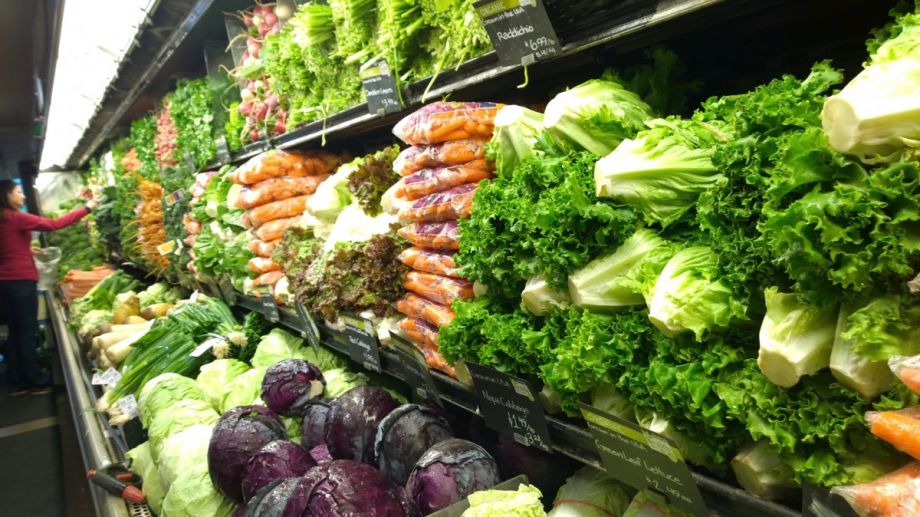
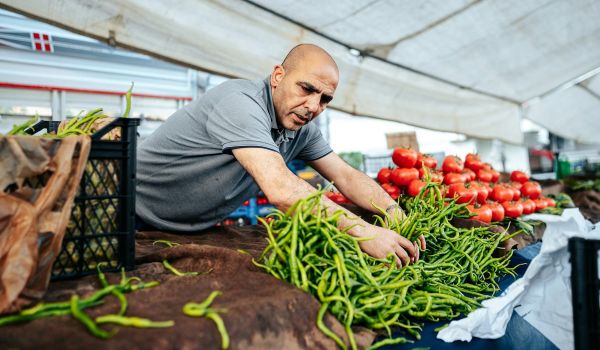
_600_350_80_s_c1.jpg)
